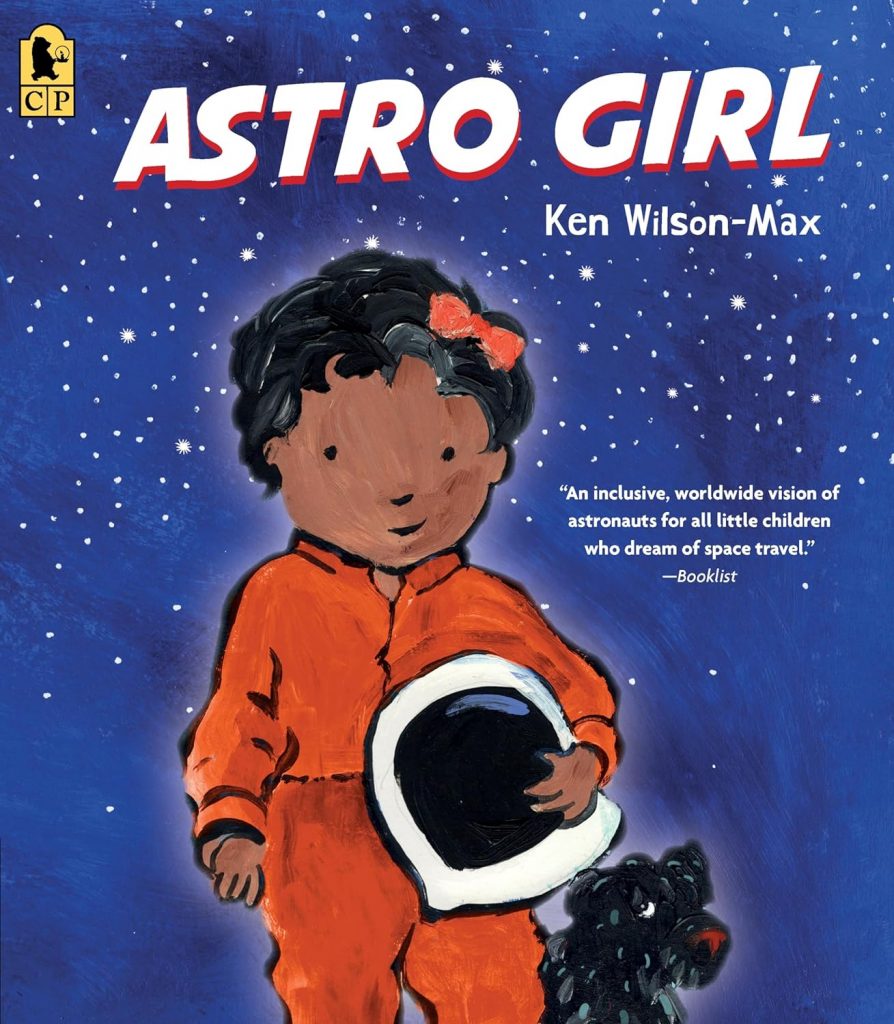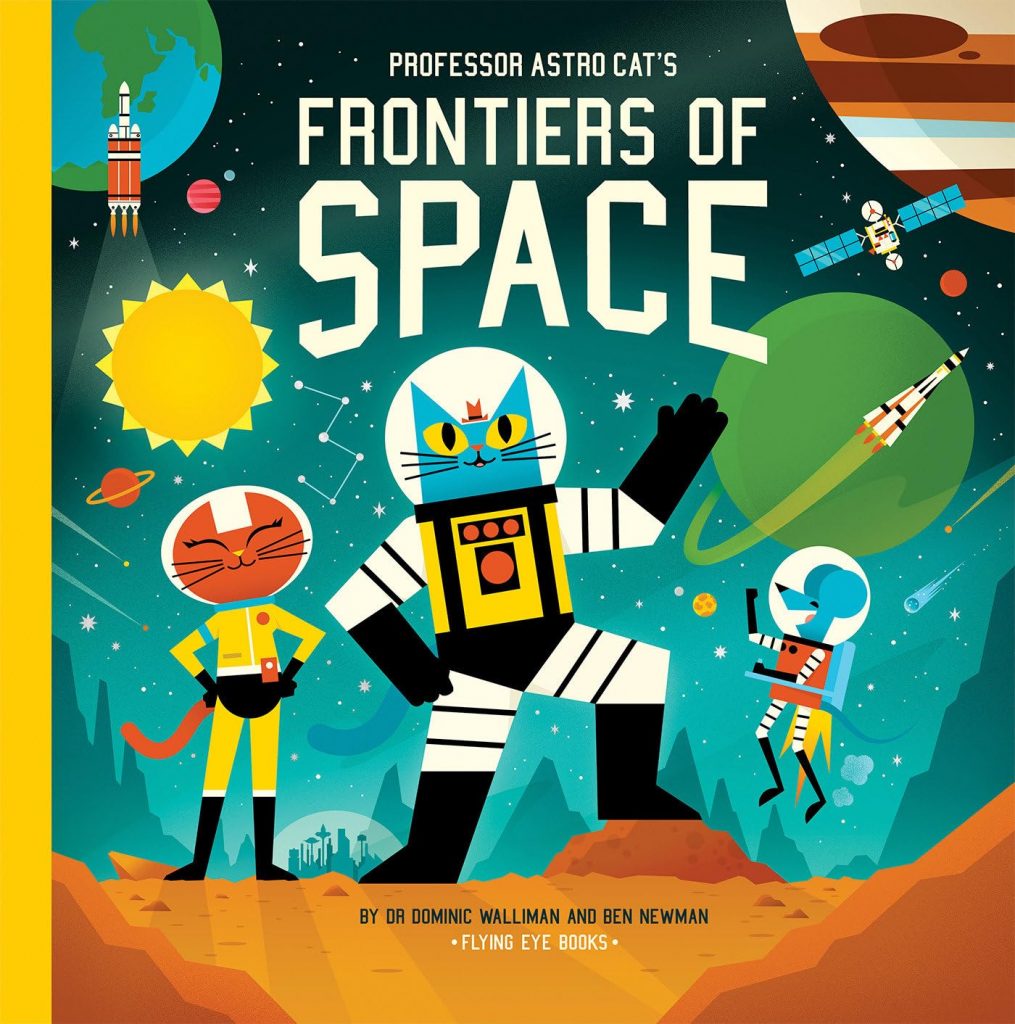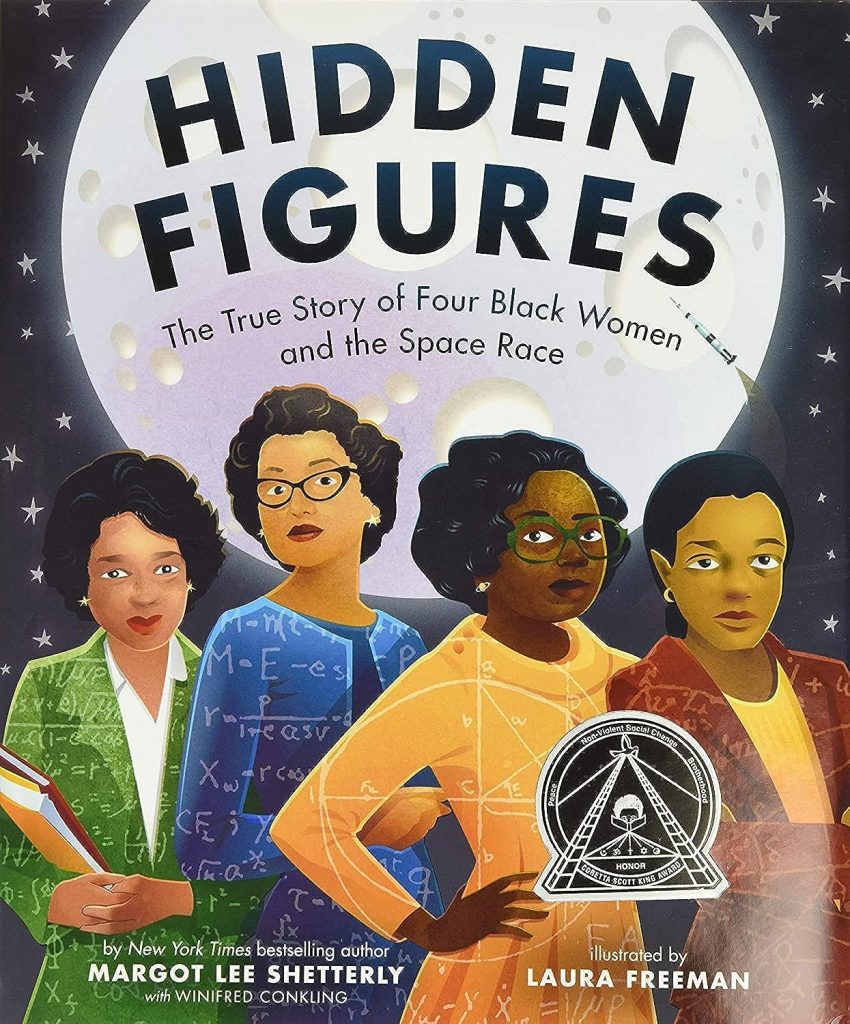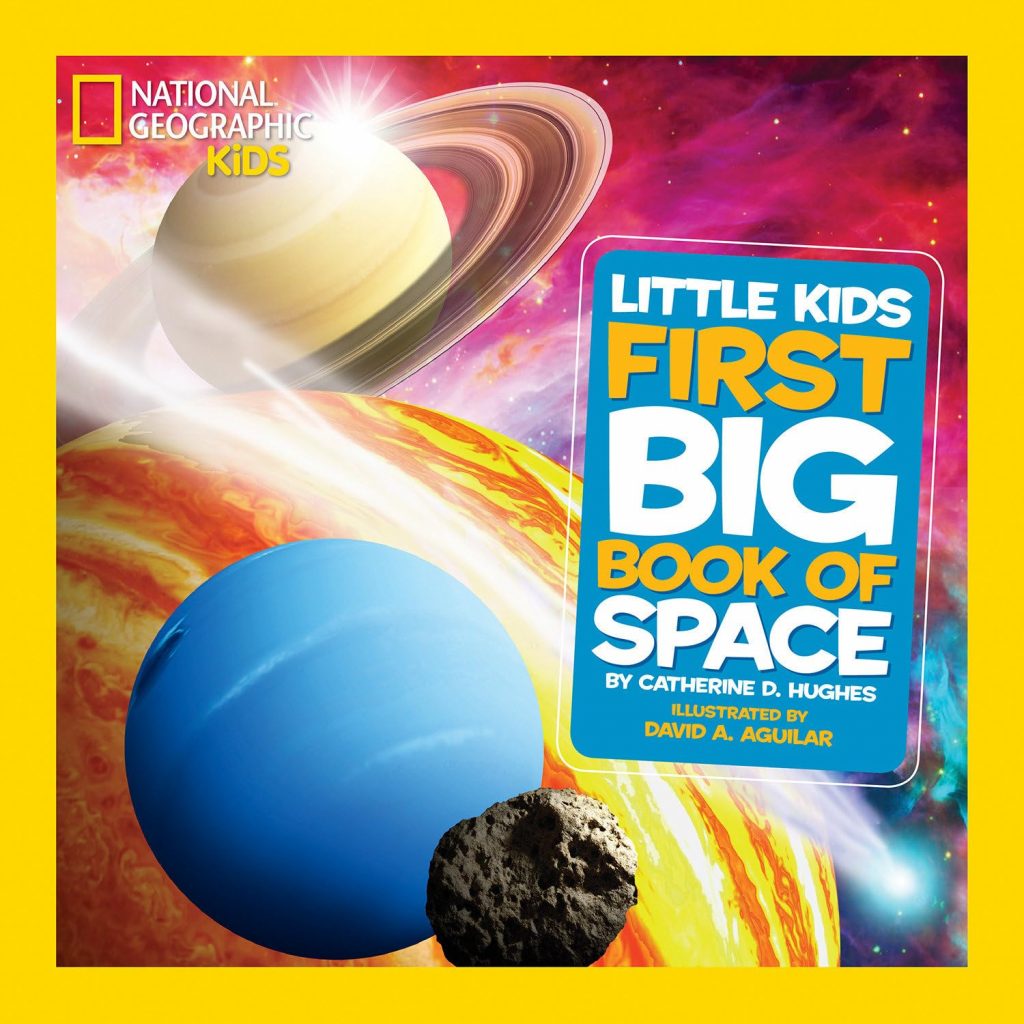Reading about space for children aged 6-8 is immensely beneficial as it coincides with a crucial period in their cognitive development where they begin to grasp more complex concepts and enhance their critical thinking skills. Books about space introduce these young learners to scientific principles and astronomical phenomena in an accessible and engaging way, fostering a deeper interest in science and technology. This age is also when children start to understand their place in the universe, making stories about space exploration and the solar system particularly captivating and inspiring. Furthermore, reading about space can boost their problem-solving skills and creativity, as they imagine navigating challenges in space travel and exploration. Additionally, it encourages a sense of wonder and curiosity about the natural world, which are essential traits for lifelong learning and appreciation of science.
“Astro Girl” by Ken Wilson-Max (Published 2019)

The story revolves around a young girl named Astrid who dreams of becoming an astronaut. Throughout the book, Astrid and her father discuss what life is like in space, including eating, sleeping, and working in zero gravity, which directly ties into the space theme. The narrative beautifully combines a child’s curiosity about space with a heartwarming father-daughter relationship.
What makes “Astro Girl” particularly useful is its ability to inspire young readers, especially girls, to imagine themselves in STEM (Science, Technology, Engineering, and Mathematics) roles. It also teaches them about the day-to-day aspects of an astronaut’s life in an engaging and accessible way. Additionally, the book is inclusive and reflects diversity, which is important for children to see representation in literature from an early age.
“Professor Astro Cat’s Frontiers of Space” by Dominic Walliman (Published 2013)

Dive into the vastness of the universe through the adventures of Professor Astro Cat and his friends. The book covers a wide range of space-related topics, including planets, stars, galaxies, and the physics of space travel. Its scientific approach to explaining complex concepts in simple terms makes it a fascinating read for children interested in learning about the cosmos.
What makes this book particularly useful is its ability to convey scientific information in a visually appealing and accessible manner. The illustrations are not only engaging but also informative, complementing the text by simplifying complex ideas into digestible pieces for young readers. It effectively encourages an interest in science by providing a thorough overview of various aspects of space and astronomy.
“The Magic School Bus Lost in the Solar System” by Joanna Cole (Published 1990)

This book is part of the beloved “Magic School Bus” series, where the adventurous Ms. Frizzle takes her class on educational field trips using her magical school bus. In this installment, the class embarks on a journey through the solar system, visiting planets, moons, and asteroids.
The book is centered around space exploration, with the class experiencing firsthand the conditions and characteristics of different celestial bodies. Each page is packed with factual information about the solar system, presented in a way that is engaging and easy to understand for young readers.
What makes “The Magic School Bus Lost in the Solar System” worth reading is its unique blend of fiction and science education. It uses storytelling to spark curiosity about space, making complex subjects approachable and exciting. The characters’ interactions and the unexpected twists in their space adventure keep readers engaged, while they learn scientific facts about the solar system.
Additionally, the book is well-illustrated, featuring colorful and whimsical drawings that help visualize the scientific concepts discussed. It’s a fantastic resource for teaching young children about space in a fun and memorable way. The series is also known for its humor and imaginative scenarios, which add an extra layer of enjoyment for readers.
“See Inside Space Stations and Other Spacecraft” by Rosie Dickins (Published 2018)

This book delves into the intricacies of various spacecraft, including space stations, shuttles, and probes. It covers the engineering and technology behind how these crafts are built and how they operate in space. Each page is filled with detailed illustrations and diagrams that lift to reveal more information, providing a deeper understanding of the components and functions of different spacecraft.
What makes this book worth reading is its interactive format that invites readers to explore and discover space technology hands-on. The flaps that can be lifted to uncover additional content not only make the reading experience more engaging but also help in retaining the information presented.
Additionally, “See Inside Space Stations and Other Spacecraft” is richly illustrated, which helps to visually explain complex concepts about space technology and life in space. This book is especially valuable for young readers with a keen interest in technology and space exploration, as it provides a clear, concise, and captivating overview of spacecraft.

This book tells the remarkable and inspiring true story of four African American women mathematicians—Katherine Johnson, Dorothy Vaughan, Mary Jackson, and Christine Darden—who played a crucial role in NASA during the early years of the U.S. space program.
The book is about space in the sense that it delves into the significant contributions these women made to the United States’ achievements in space exploration, particularly during pivotal events like John Glenn’s orbit around Earth and the moon landing. Their work in computing and engineering helped lay the groundwork for future space missions.
What makes “Hidden Figures” worth reading is not only its rich historical context and detailed recounting of NASA’s space race but also its focus on the racial and gender barriers these women faced and overcame. The narrative highlights their perseverance, intelligence, and crucial contributions in a time when both African Americans and women were marginalized in scientific and professional fields.
“Dr. Maggie’s Grand Tour of the Solar System” by Maggie Aderin-Pocock (Published 2019)

This educational book takes young readers on a journey through the solar system, guided by Dr. Maggie herself, a space scientist. The tour covers the Sun, the planets, and other celestial phenomena, combining scientific facts with fascinating insights and speculative elements about what it might be like to visit these places.
The book’s focus on space is expansive and detailed, presenting the latest information about our solar system in an accessible and engaging way. By using simple language, vivid illustrations, and interactive elements, it invites children to explore the wonders of space, from storms on Jupiter to the icy rings of Saturn.
It addresses complex astronomical concepts in a manner that children can understand and appreciate, which encourages them to think critically about the universe and their place within it.
Moreover, the book is packed with ‘Did You Know?’ boxes that provide fun facts and encourage further exploration. The involvement of Dr. Maggie Aderin-Pocock, a renowned space scientist, adds authenticity to the narrative and serves as an inspirational figure for children, especially girls and minorities, highlighting that a career in science is achievable for everyone.

This book is designed to introduce young children to the wonders of space, covering topics such as the Earth, moon, stars, planets, and other celestial bodies in our solar system and beyond. The content is organized into short, simple sections that make complex astronomical concepts accessible to preschoolers and early elementary-age children.
The book’s emphasis on space is thorough, providing vivid explanations and stunning visuals that help children understand the size and scale of the universe and the objects within it. Each topic is presented with engaging, age-appropriate language and is accompanied by colorful illustrations and photographs that capture the beauty and complexity of space.
It encourages questions and exploration, which are key components of early childhood education. By presenting facts in a fun and interactive format, it helps develop a child’s ability to absorb scientific concepts and vocabulary.
Additionally, the book is part of the “National Geographic Kids” series, which is well-regarded for its educational quality and ability to engage young readers. The inclusion of fun facts, questions to ponder, and simple quizzes throughout the book adds an interactive element that enhances learning and retention. This book serves as a wonderful introduction to space for young readers, setting the foundation for a lifelong interest in science.
Leave a Reply